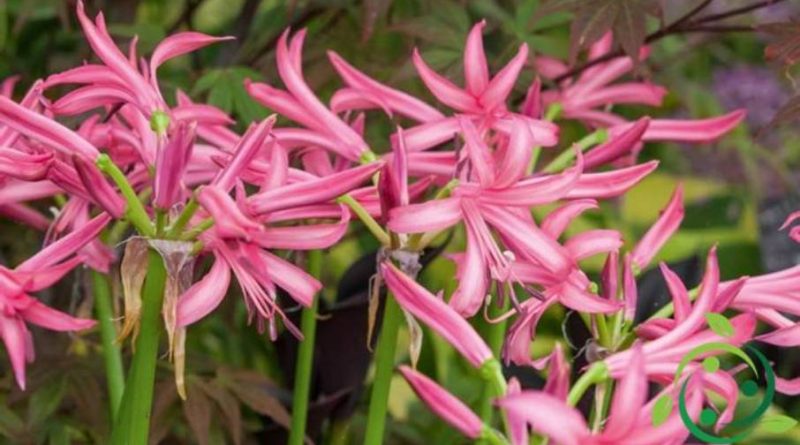How to grow Nerine
How to grow Nerine
The Nerine (Nerine Herb., 1820) are a genus of plants belonging to the Amaryllidaceae family native to southern Africa. Within this genus are included species that are cultivated as ornamental plants due to their elegant appearance also given by umbel inflorescences.
In this card we will see how to grow Nerine, following the most appropriate agronomic tricks, and the essential characteristics of this kind of plants.
These are bulbous plants that can be grown both in pots and in the garden.
They are plants, bushy in appearance, which at maturity are characterized by numerous lanceolate and leathery leaves, with an intense green color, arranged to form a central rosette.
At the center of this rosette there are several stems that end with a cluster inflorescence consisting of flowers with ribbon-shaped petals with wavy margins, whose color shades range from white to pink to amaranth red or intense red, with flowering going from summer to the autumn one.
Among the most cultivated species we remember the Nerine Bowdenii whose flowers are also delicately scented.
For the choice of soil or substrate, in the case of pot cultivation, we remind you that the Nerine also adapt to the common well-drained garden soil even if the most suitable soil can be obtained by mixing in equal parts earth, sand and peat.
In choosing the optimal exposure it is good to opt for bright places with a mild – temperate climate; in fact they are plants that, due to their origin, fear cold and frost.
Irrigation must be fairly regular during the vegetative growth and must be suspended when the leaves begin to wither.
For the fertilization it is good to choose a good well-humified organic compound or, in the cultivation of mature manure in the garden. For plants grown in pots, a liquid fertilizer for flowering plants can be added during the vegetative period, from the appearance of the first shoots, once a month.
As regards plant and propagation, it should be remembered that the Nerine reproduce by seed or by division of the lateral cloves or also by division of the tufts.
The optimal sowing period is that of spring.
The bulbs are planted from mid-spring to May both on the ground and in pots in holes twice as high as the height of the bulb, about 20 cm apart.
The plants cultivated in pots must then be repotted every 3 years by feeding the new pot of the same composition into the new pot (slightly larger than the previous one).
The Nerine do not need pruning but simply the elimination of withered flowers and the removal of dried leaves.
Finally, a reference to the diseases and parasites that can affect these plants. Like all bulbous plants they fear the root rot caused by water stagnation and among animal parasites they can be subjected to the attack of aphids which, in conditions of massive presence, can make the plants wither. It is good not to use, for this reason, nitric fertilizers and, in the case of the presence of these insects, to intervene at the first appearance with products based on Marseille soap.
In addition, the bulbs also fear fusariosis, a fungal disease that is manifested by dense white-blackish clusters that cause rot and emptying.

